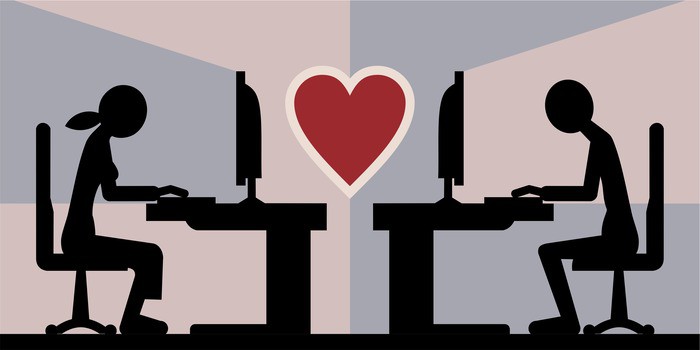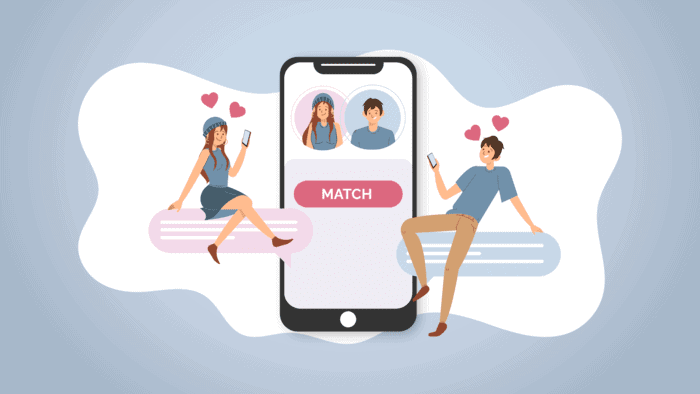The advent of social media has had a profound impact on many aspects of modern life, including the way we interact with each other romantically. Dating culture, which encompasses the norms, practices, and expectations around romantic relationships, has been significantly affected by the rise of social media platforms like Facebook, Instagram, Twitter, and dating apps like Tinder and Bumble.
Social media has changed the way people meet, communicate, and form relationships. With the increasing popularity of online dating, people have more opportunities than ever before to connect with potential partners. The convenience and accessibility of social media have made it easier for people to find and communicate with others who share their interests and values.
However, social media has also had negative effects on dating culture. It has contributed to an increased emphasis on physical appearance and presentation, with many people feeling the pressure to present a highly curated and filtered version of themselves online. Social media has also made it easier for people to engage in negative behaviors like ghosting, in which one person abruptly ends all communication with another without explanation.
Overall, the impact of social media on dating culture is complex and multifaceted. It has both positive and negative effects on how we meet, communicate, and form relationships. Understanding the ways in which social media affects dating culture is important for navigating the challenges and opportunities of modern romance.

Positive Impacts of social media on the dating culture
Social media has greatly increased the number of opportunities for people to meet potential partners. Online dating apps and websites have made it possible to connect with people from all over the world who share similar interests, goals, and values. Social media platforms like Instagram and Facebook allow people to connect with others based on shared interests, hobbies, or groups.
Social media has made communication more convenient and accessible for people. In the past, people had to rely on phone calls or in-person meetings to communicate with their partners, which could be time-consuming and difficult to arrange. With social media, people can easily communicate with their partners anytime and anywhere, using messaging, video chat, or voice calls.
Social media has given people the ability to showcase their personalities and interests to potential partners. Dating apps allow people to create detailed profiles that showcase their interests, hobbies, and values. Social media platforms like Instagram allow people to share pictures and posts that reflect their personalities and lifestyle. This makes it easier for people to find partners who share their interests and values.
Social media has contributed to a greater acceptance of diverse relationship models. Online dating apps and websites have made it possible for people to find partners who share their preferences for monogamous or non-monogamous relationships, or for partners who have different gender identities or sexual orientations. Social media has also made it easier for people to find communities and support groups that celebrate and validate different types of relationships.
In conclusion, social media has had a positive impact on dating culture by providing increased opportunities for people to meet potential partners, making communication more convenient and accessible, giving people the ability to showcase their personality and interests, and promoting greater acceptance of diverse relationships models.
Negative impacts of social media on the dating culture
One of the negative impacts of social media on dating culture is an increased emphasis on physical appearance and presentation. With the rise of dating apps and social media platforms, people often judge potential partners based on their appearance and the quality of their online profiles. This can create pressure for people to present a highly curated and filtered version of themselves online and can lead to unrealistic expectations and disappointment in real-life interactions. You can click here to learn about free hookup sites that prioritize connection over appearance.
Social media has also contributed to a decrease in attention span and patience for building relationships. With so many options available online, people can quickly become distracted and lose interest in a potential partner if they do not immediately meet their expectations. This can make it difficult for people to develop meaningful connections and may contribute to a culture of disposable relationships.
Another negative impact of social media on dating culture is an increased prevalence of negative behaviors such as ghosting. Online communication makes it easy for people to abruptly end all communication with a potential partner without explanation, which can be hurtful and confusing. The anonymity of social media can also lead to other negative behaviors, such as cyberbullying or online harassment.
Finally, social media has increased the risk of online harassment and exploitation. With the ease of online communication, people can be targeted by scammers or catfishers who use fake identities to manipulate or exploit them. Social media has also been linked to an increase in online harassment, particularly for women and members of marginalized groups.
In conclusion, while social media has brought many positive changes to the dating culture, it has also had negative impacts, including an increased emphasis on physical appearance and presentation, decreased attention span and patience for building relationships, an increased prevalence of negative behaviors such as ghosting, and an increased risk of online harassment and exploitation. Learn more about free hookup sites that prioritize safety and security for users.
The role of social media in changing societal norms and expectations around dating
Social media has played a significant role in changing societal norms and expectations around dating. One of the biggest changes is the greater acceptance of online dating and virtual communication. In the past, meeting potential partners online was often seen as taboo or embarrassing, but now it is widely accepted as a legitimate way to find love. Social media has made it possible for people to connect with others from all over the world, expanding the pool of potential partners and making it easier for people to find compatible matches.
Social media has also changed expectations around courtship and commitment. In the past, traditional gender roles often dictated how people should behave in romantic relationships, with men expected to initiate courtship and women expected to be passive. However, social media has challenged these norms by creating more egalitarian dynamics in relationships. Women, for instance, can initiate contact with potential partners and take a more active role in pursuing relationships. Additionally, social media has given people more options for the types of relationships they want, including casual dating, open relationships, and long-distance relationships.
Finally, social media has also increased the pressure on people to constantly present a curated online image. In order to attract potential partners, people often spend a lot of time and energy crafting the perfect online profile that showcases their best qualities. This can lead to unrealistic expectations and a culture of perfectionism that can be damaging to people’s self-esteem and mental health. Furthermore, social media can create a “fear of missing out” (FOMO) that can lead people to constantly compare themselves to others and feel inadequate.
In conclusion, social media has played a significant role in changing societal norms and expectations around dating. While it has brought greater acceptance of online dating and virtual communication and challenged traditional gender roles, it has also increased the pressure on people to constantly present a curated online image, leading to unrealistic expectations and a culture of perfectionism.

Conclusion
In conclusion, social media has had a significant impact on the dating culture, bringing both positive and negative changes. On the positive side, social media has increased opportunities for meeting new people, provided more convenient communication and accessibility, and increased acceptance of diverse relationship models. However, there are also negative impacts, such as an increased emphasis on physical appearance and presentation, decreased attention span and patience for building relationships, an increased prevalence of negative behaviors such as ghosting, and an increased risk of online harassment and exploitation.
Moreover, social media has played a significant role in changing societal norms and expectations around dating, such as greater acceptance of online dating and virtual communication, changing expectations around courtship and commitment, and increased pressure to constantly present a curated online image. While these changes have expanded the pool of potential partners and created more egalitarian dynamics in relationships, they have also led to unrealistic expectations and a culture of perfectionism that can be damaging to people’s self-esteem and mental health.
As social media continues to evolve and shape the way people interact and connect with each other, it is important to be aware of both the positive and negative impacts it can have on dating culture. By understanding these impacts, individuals can make more informed decisions about how they use social media in their romantic lives and work to create healthier and more fulfilling relationships both online and offline.